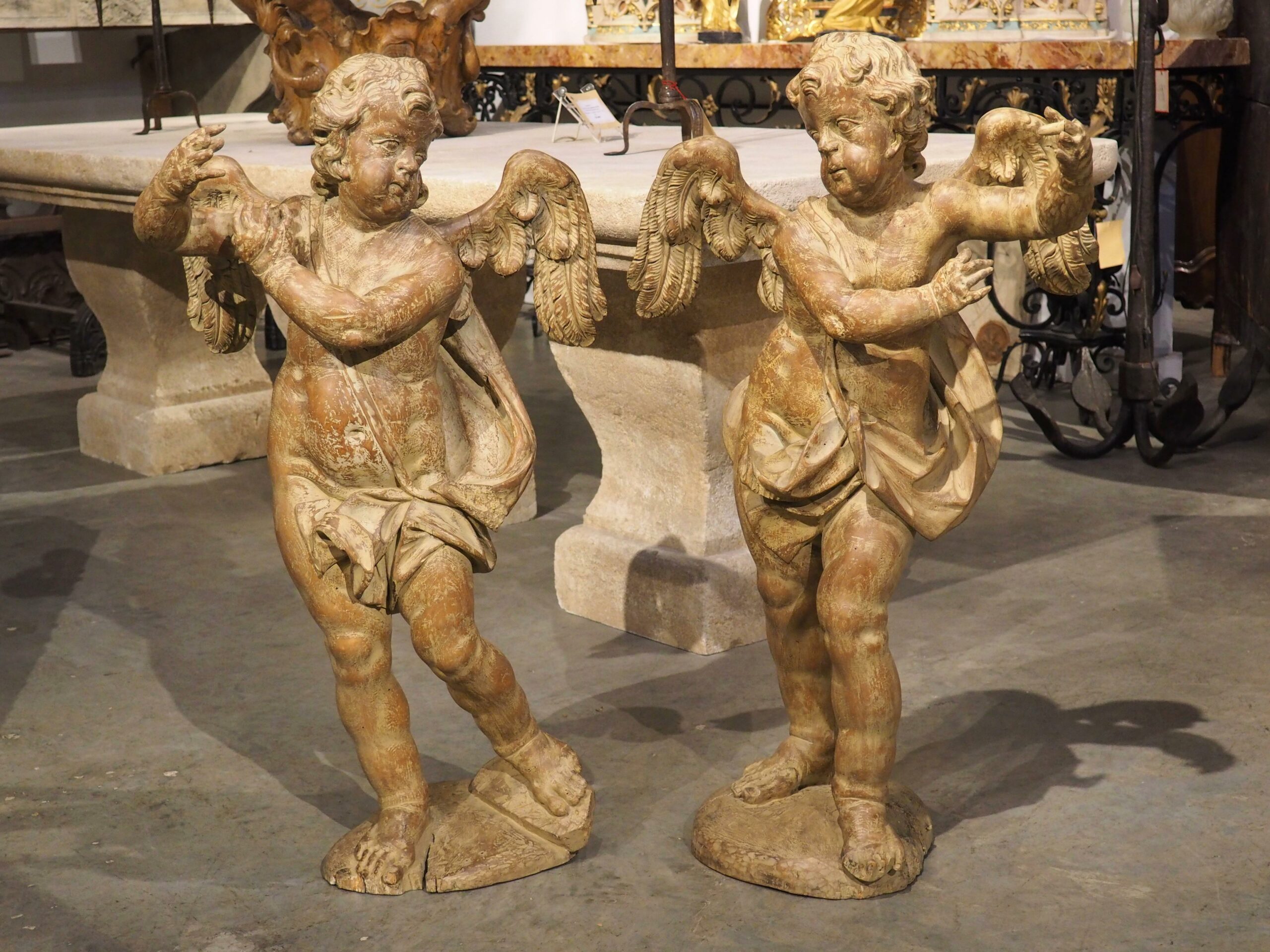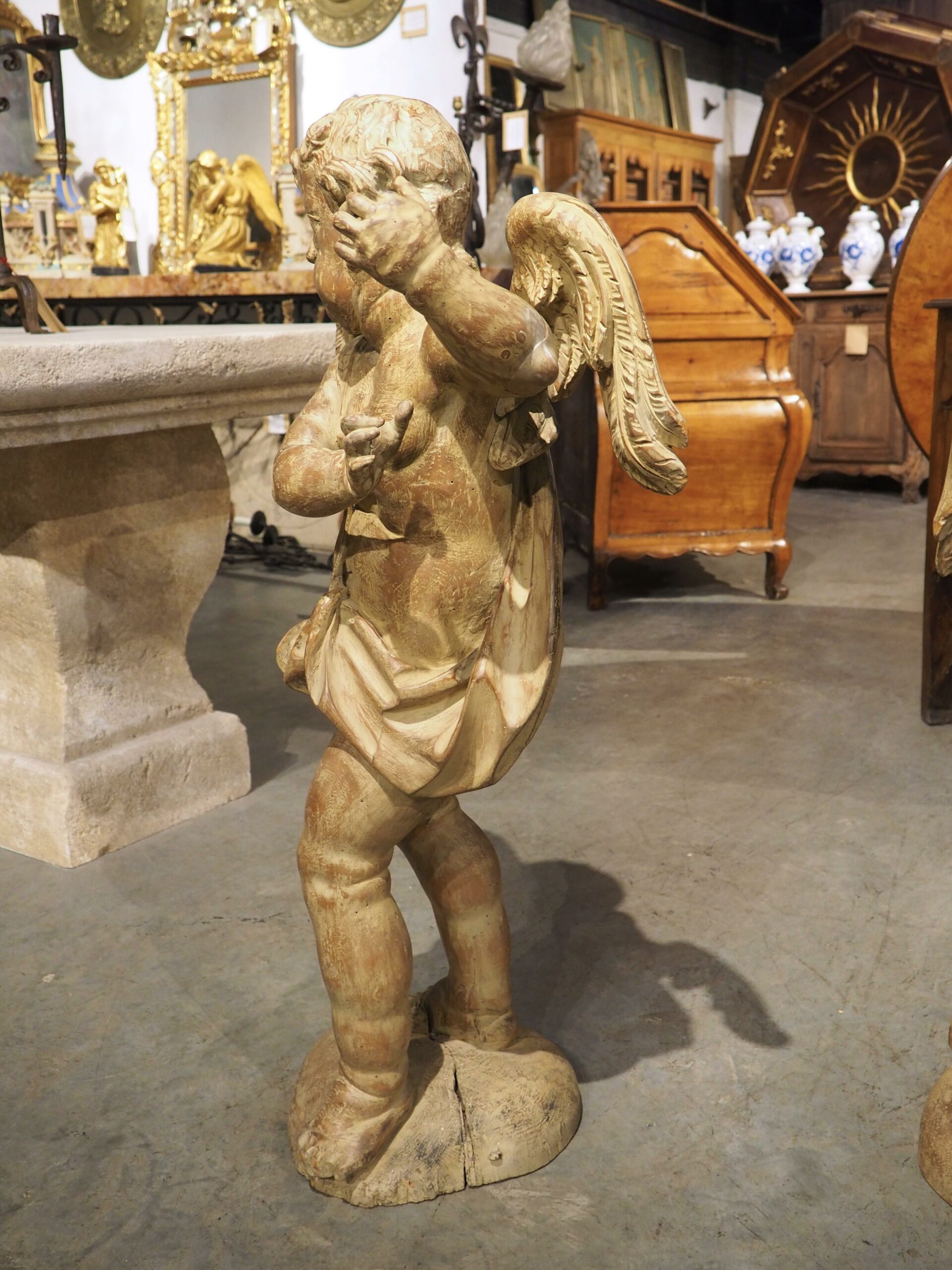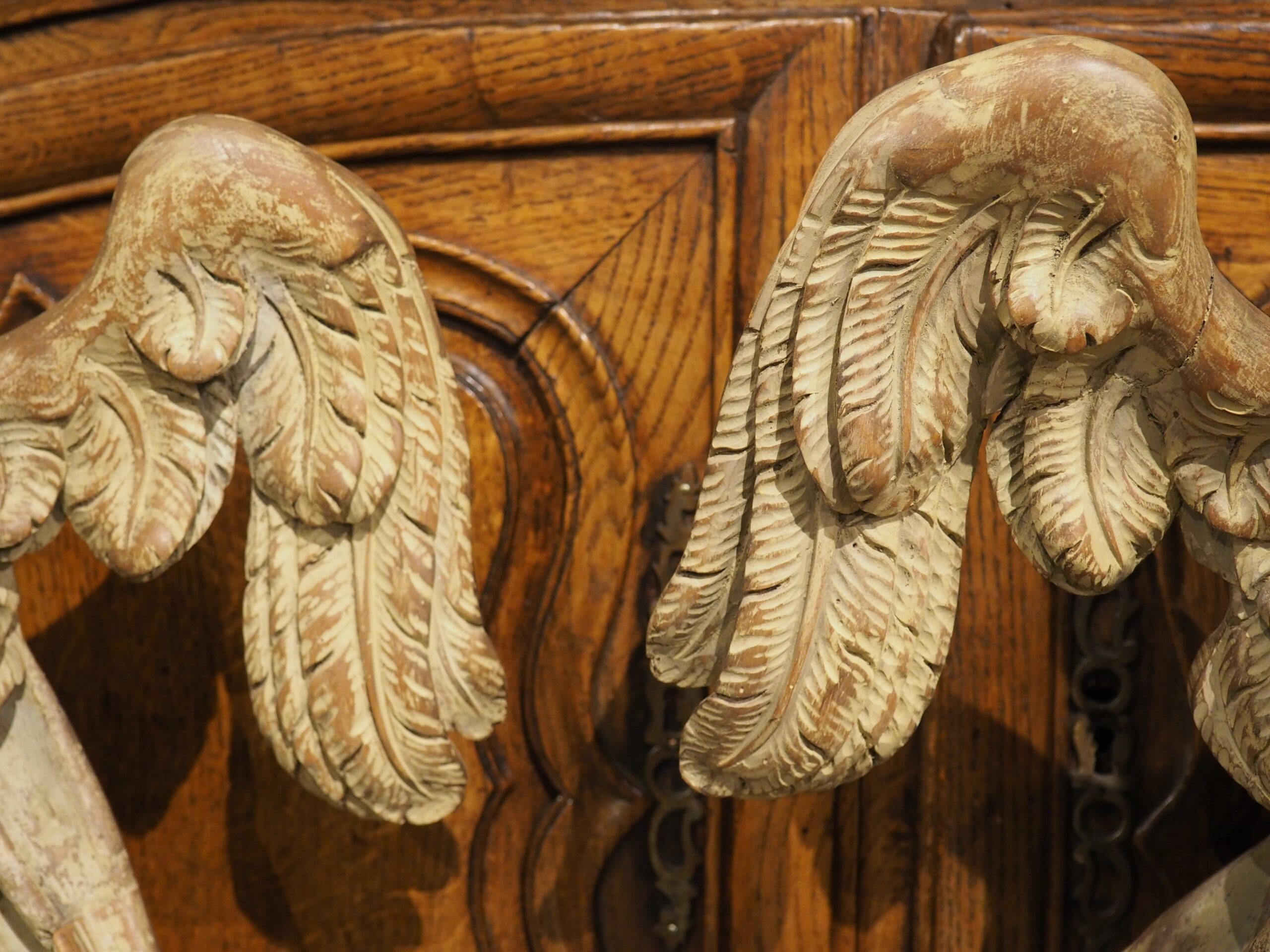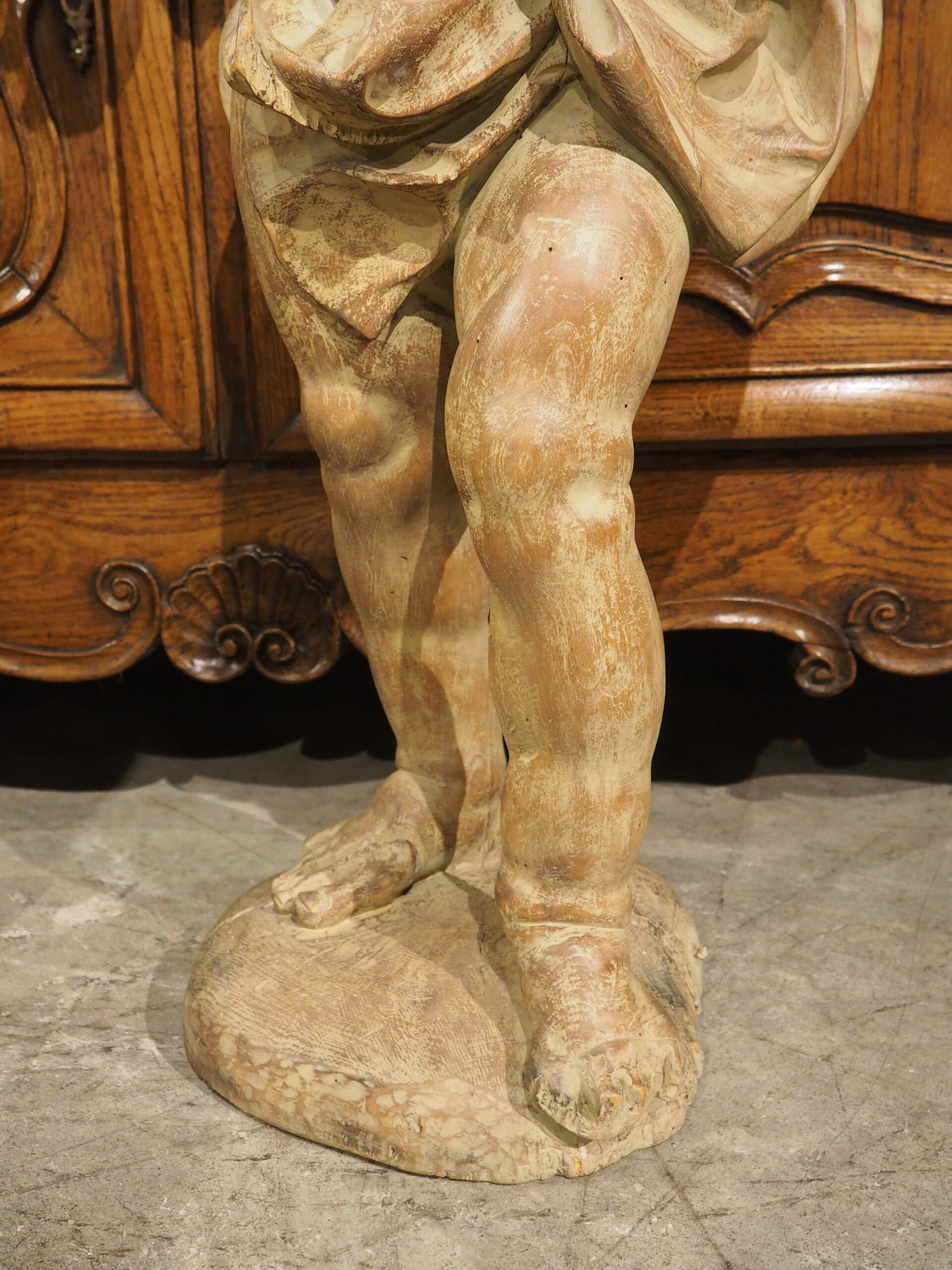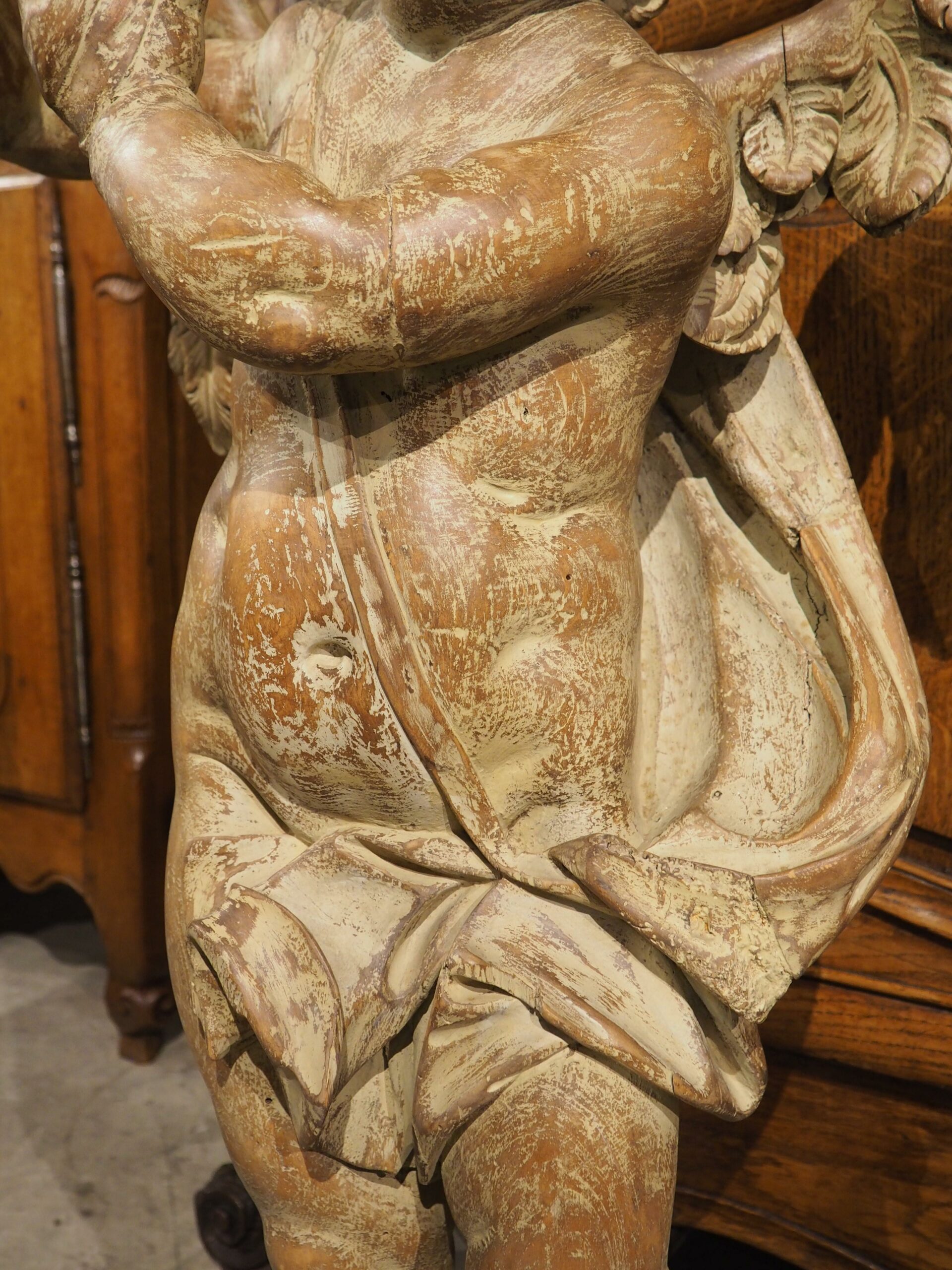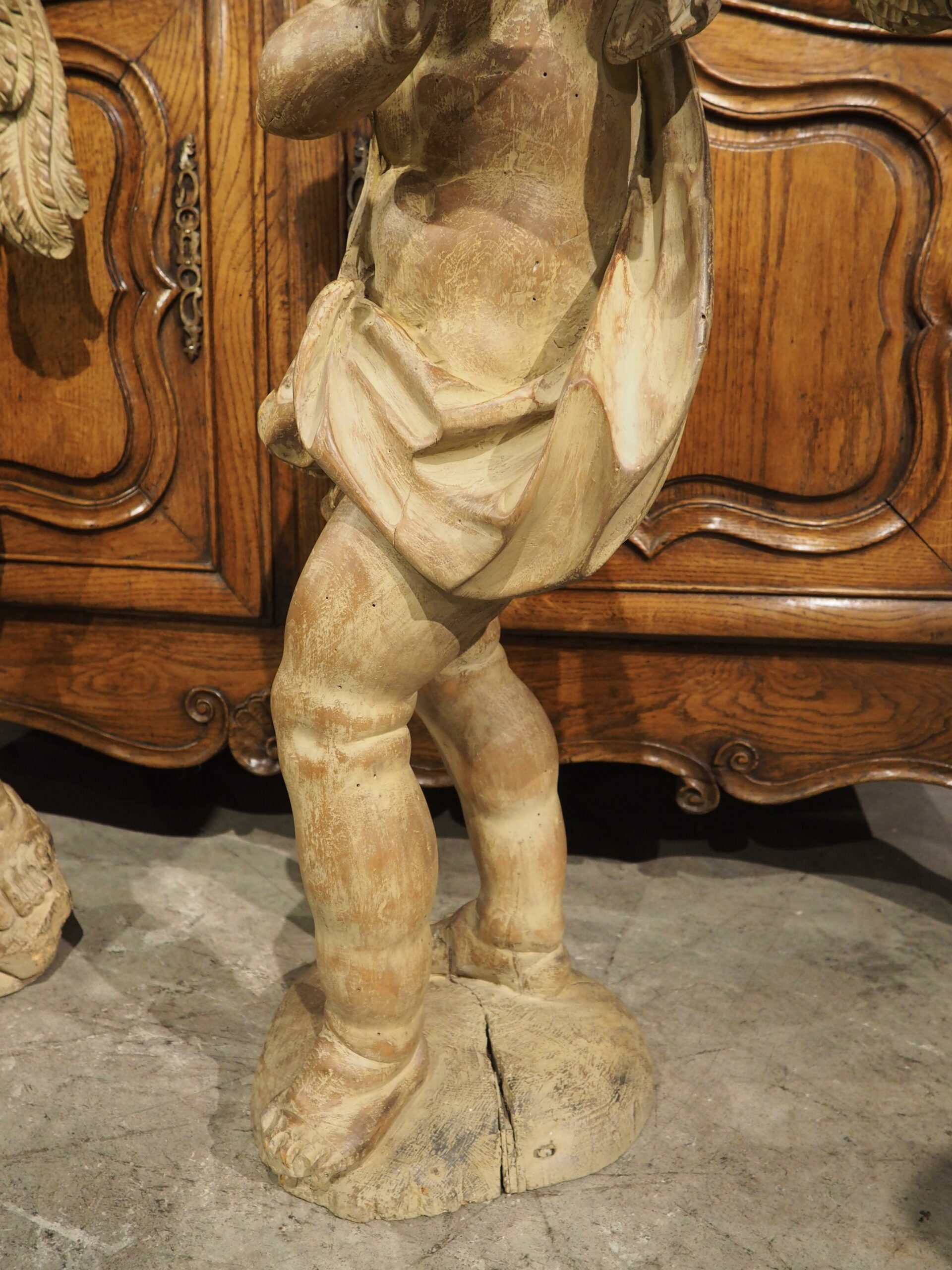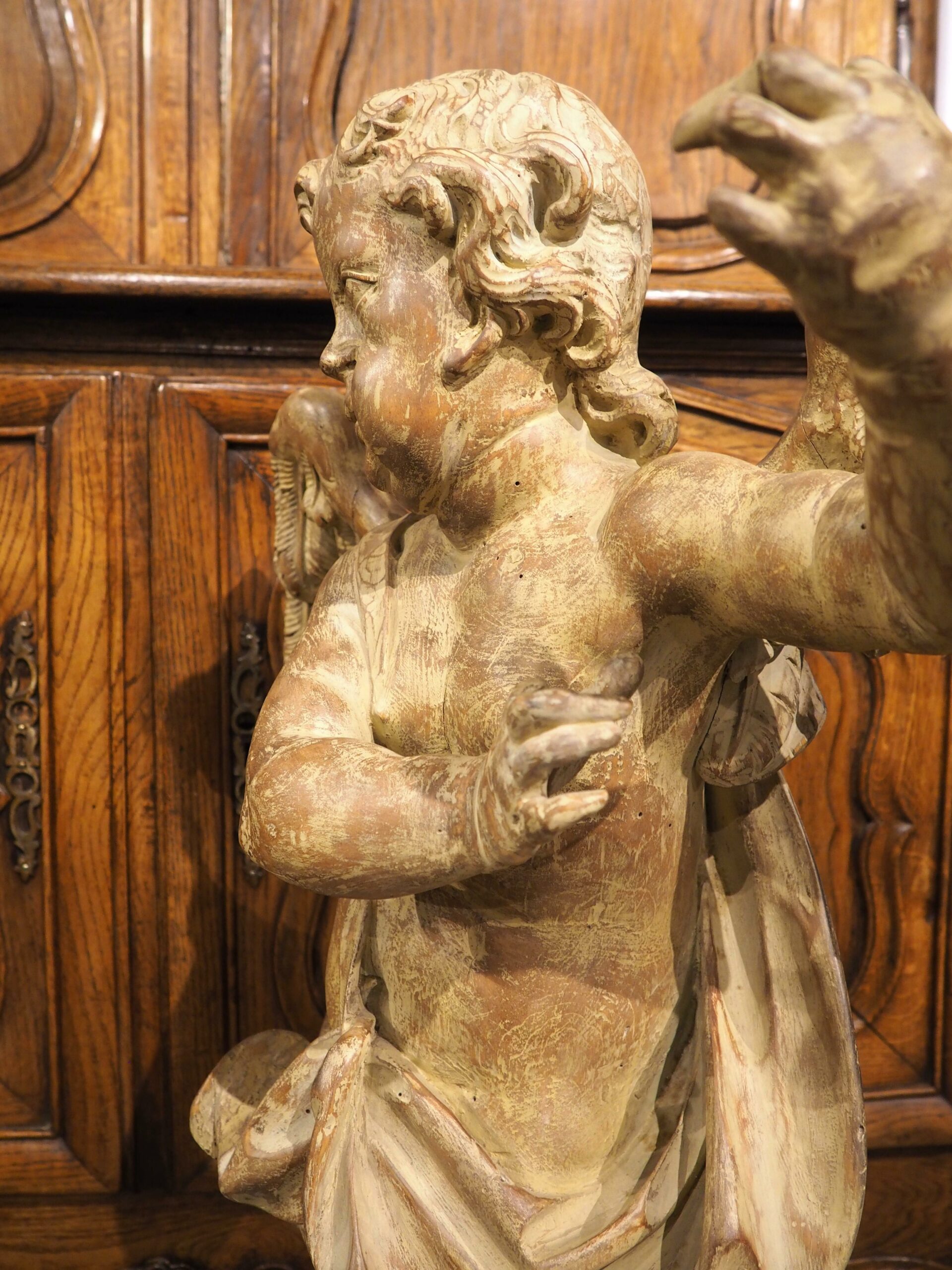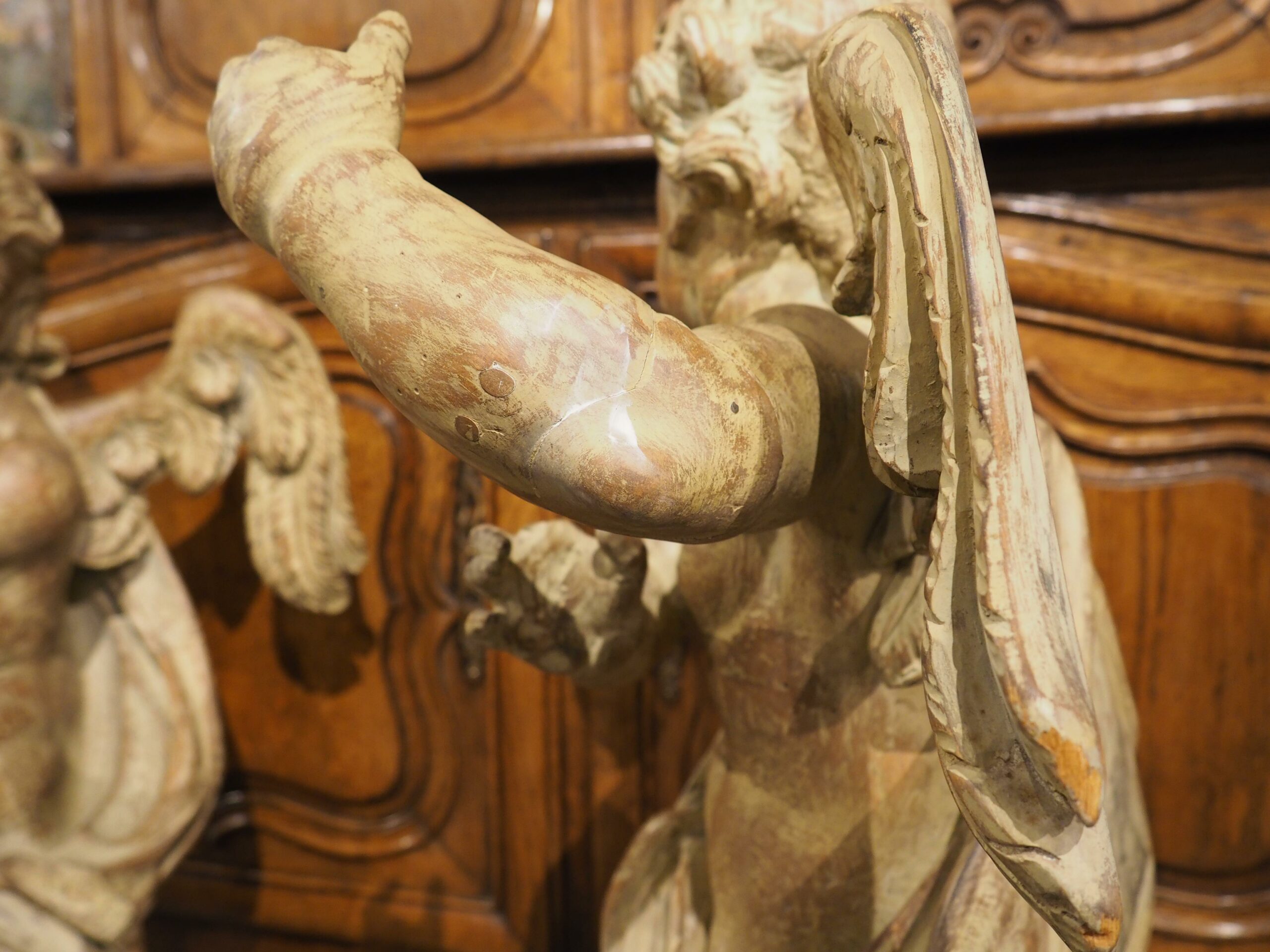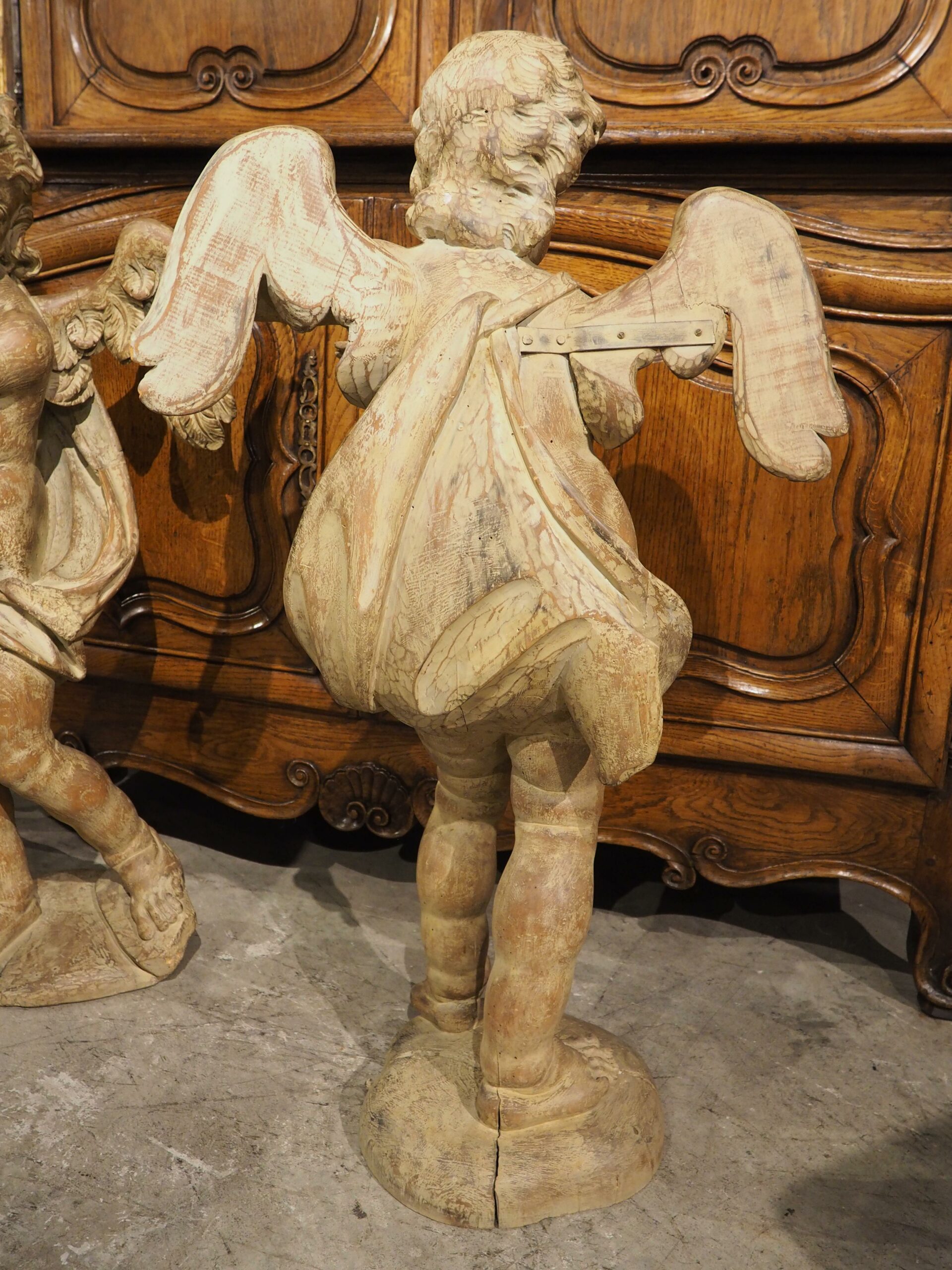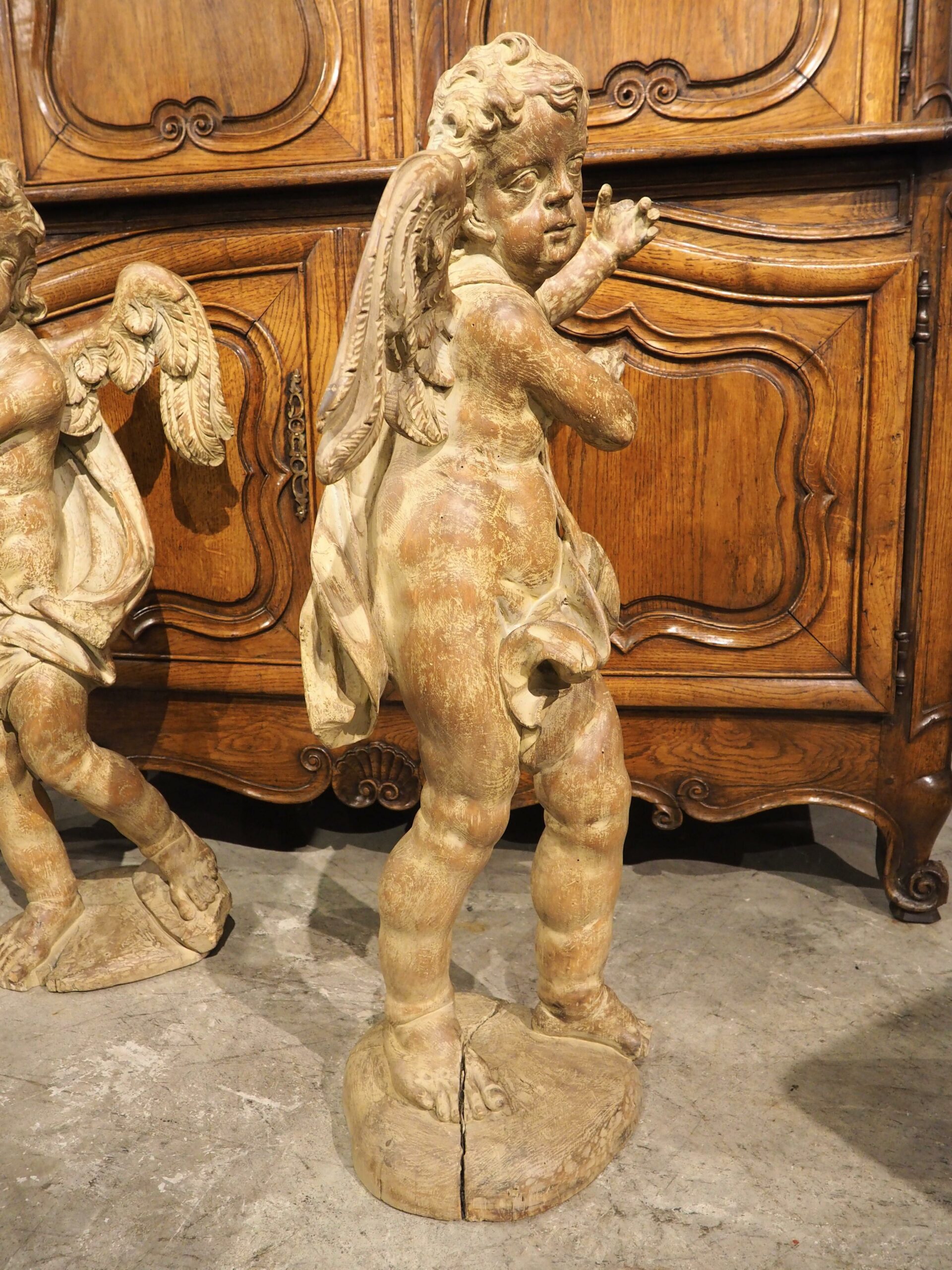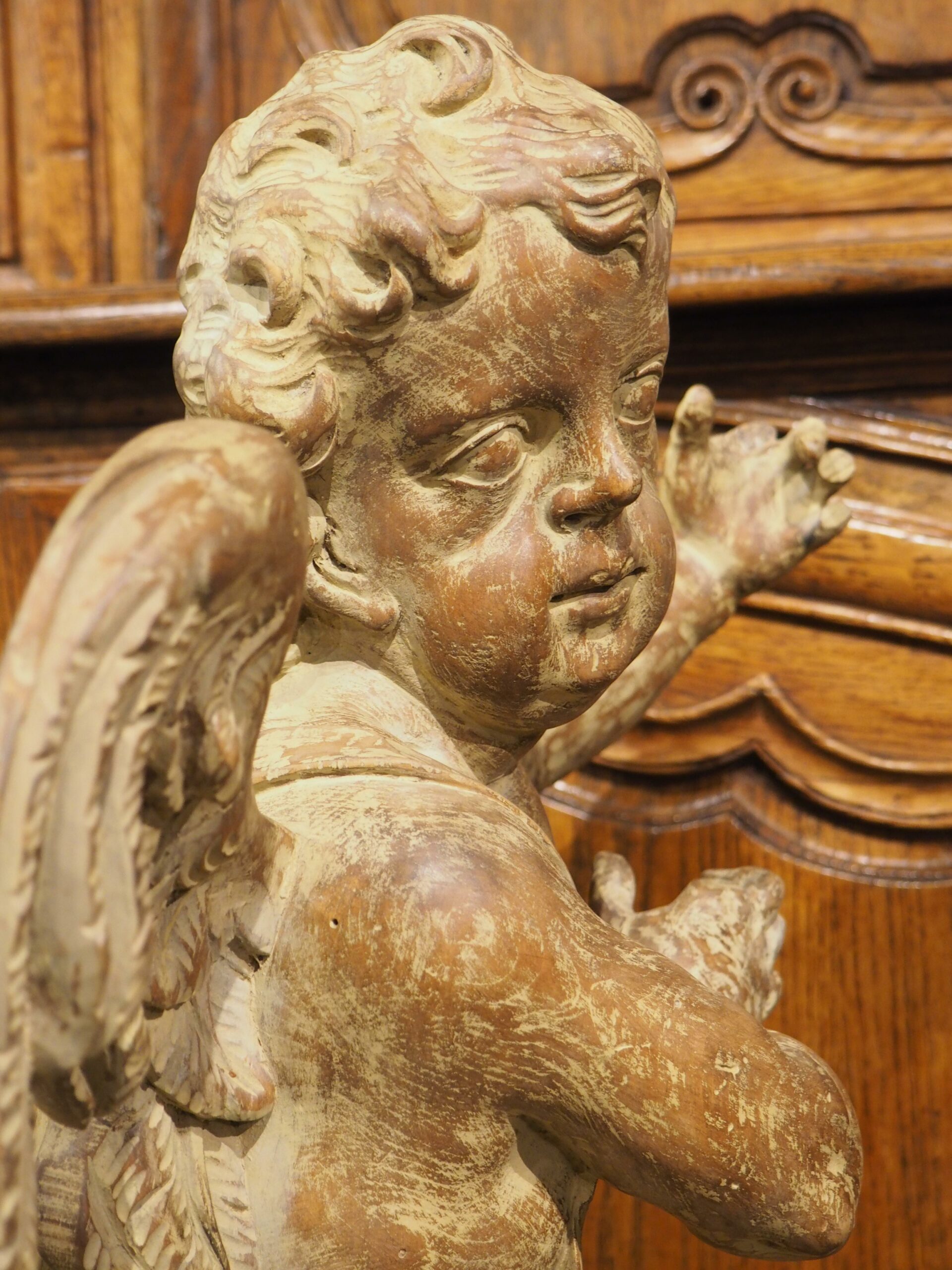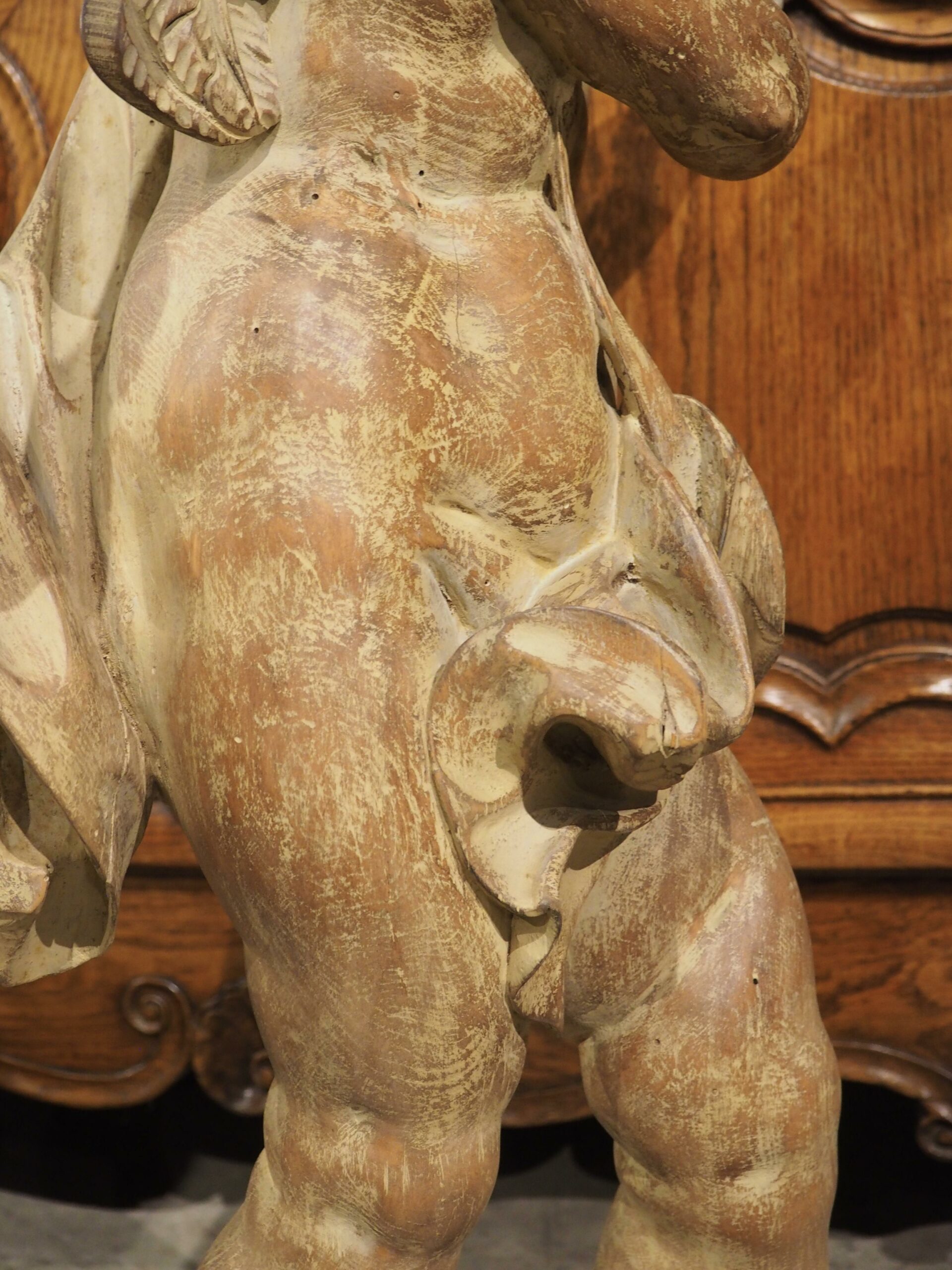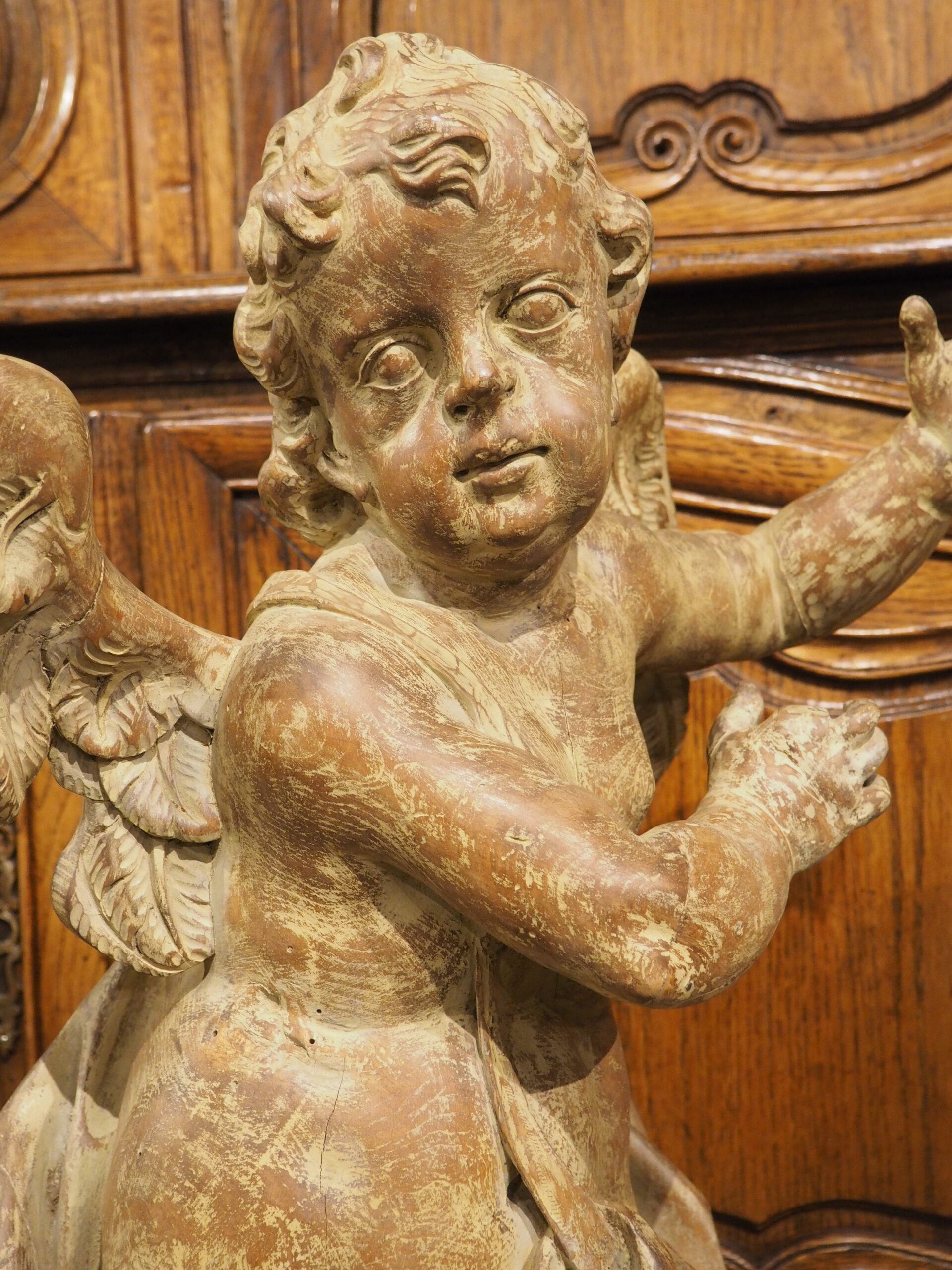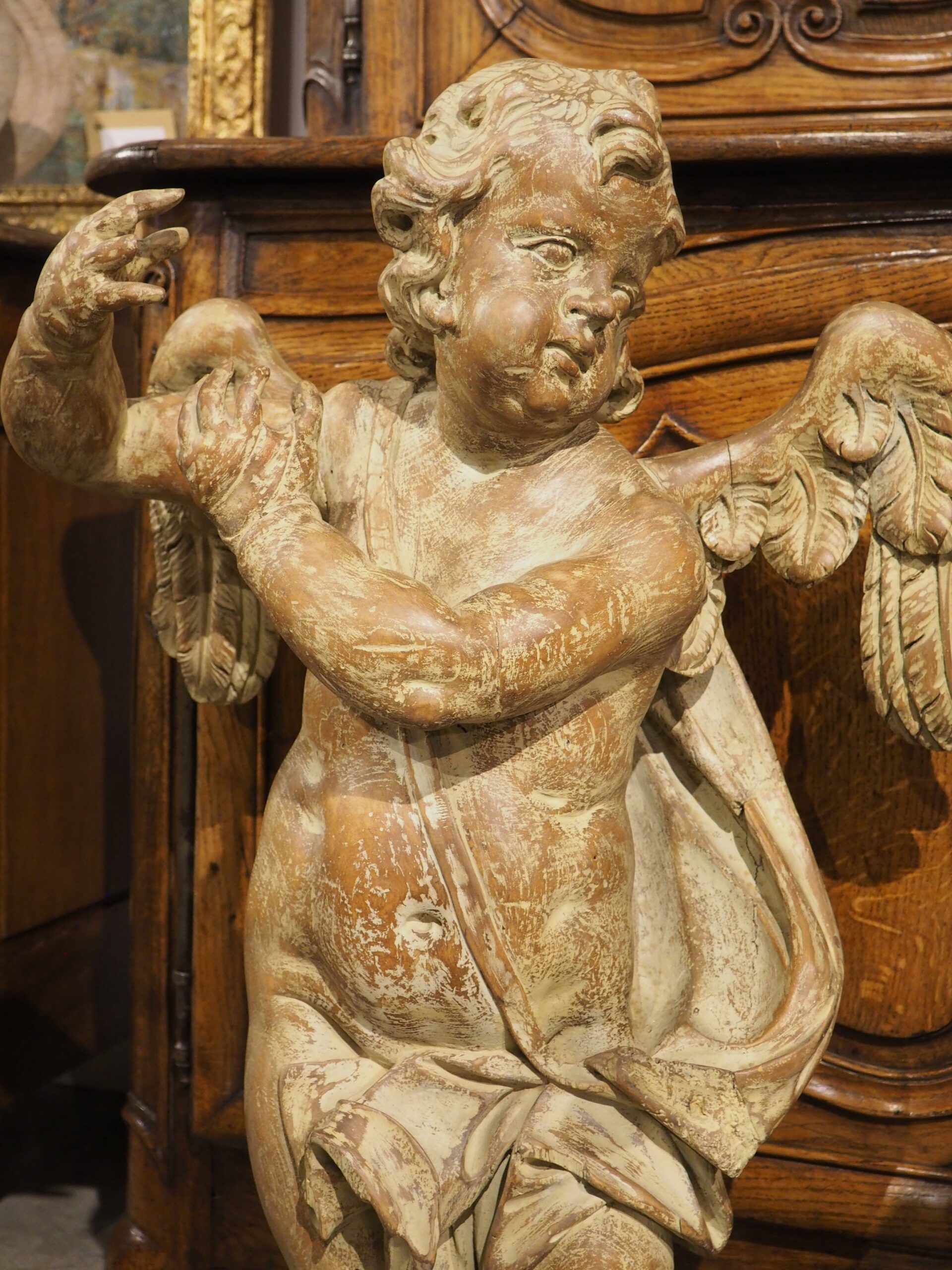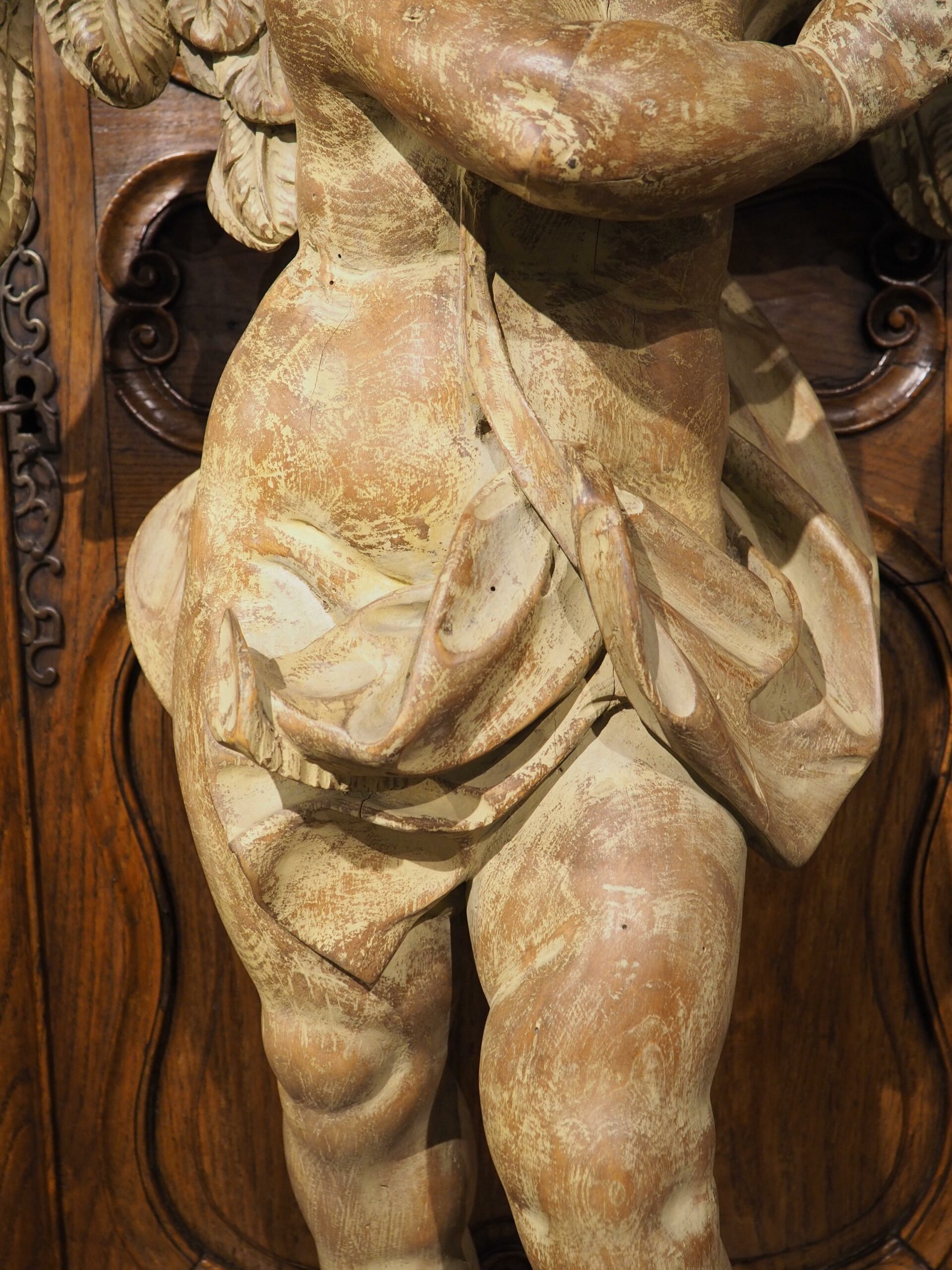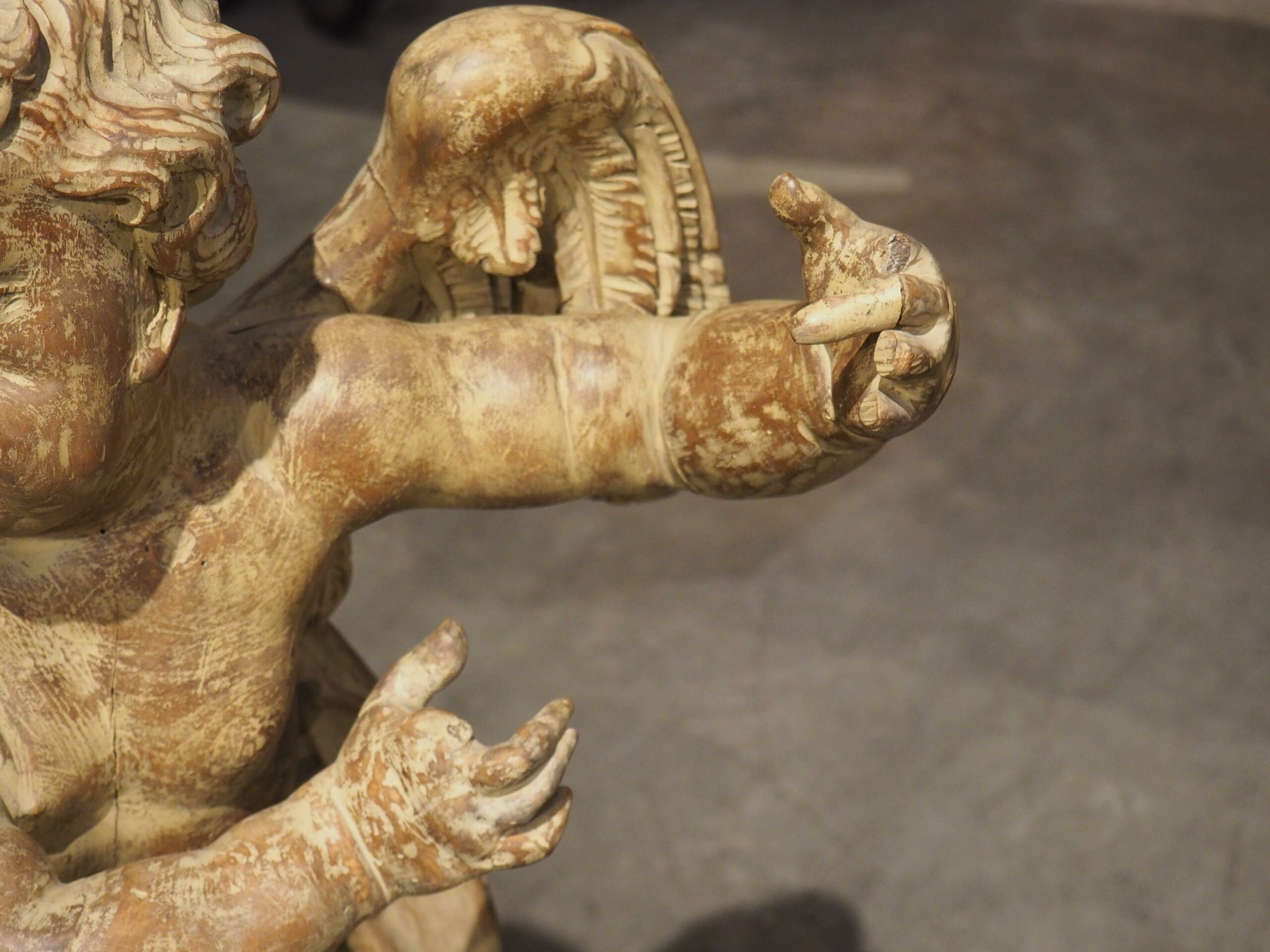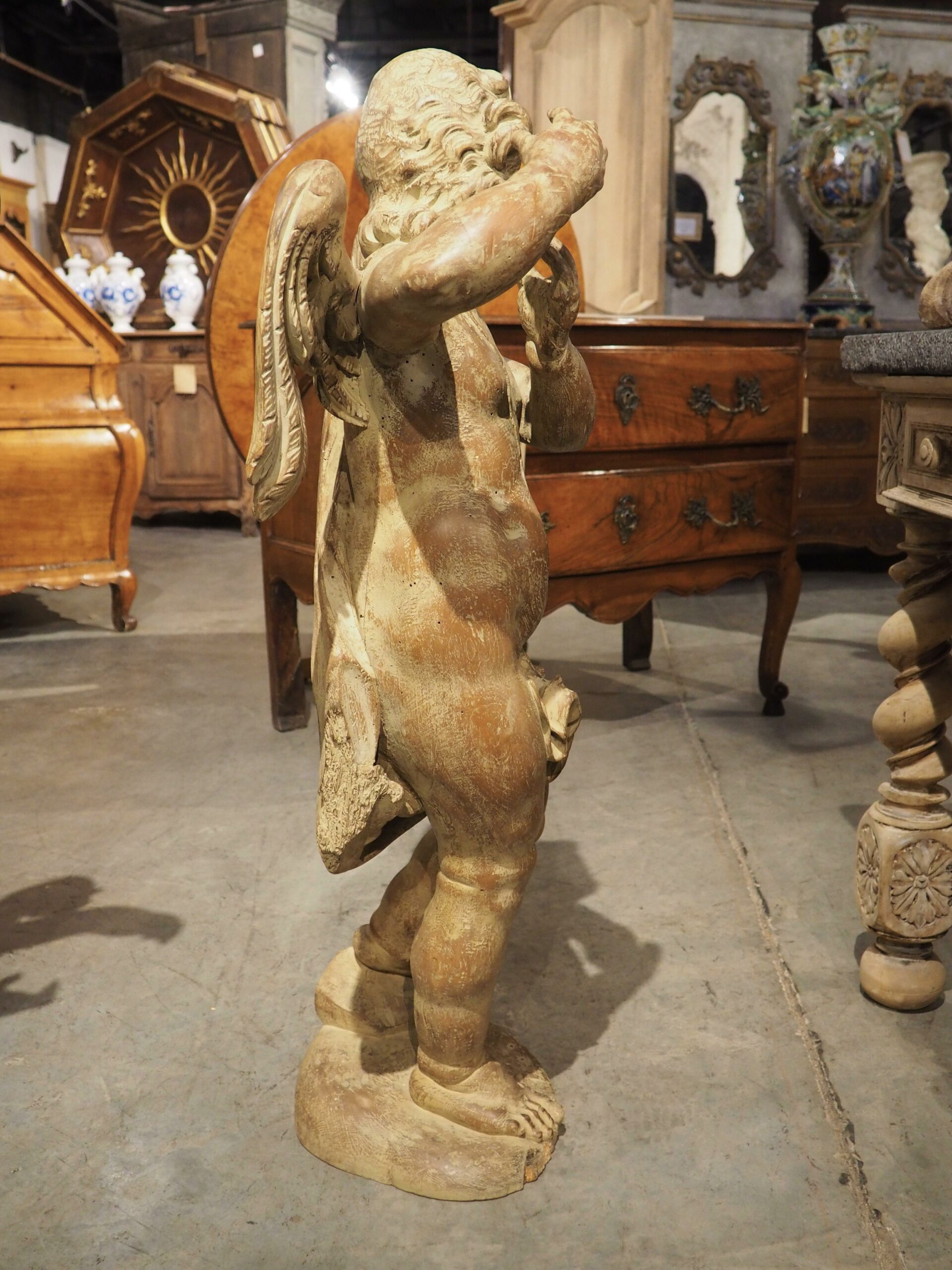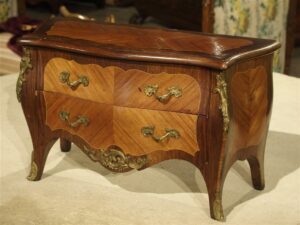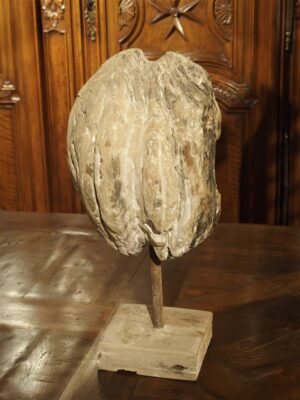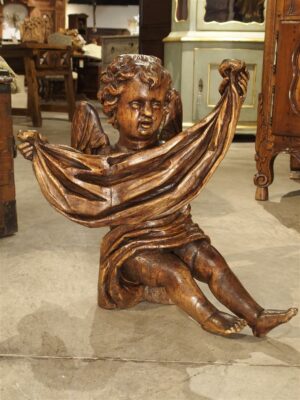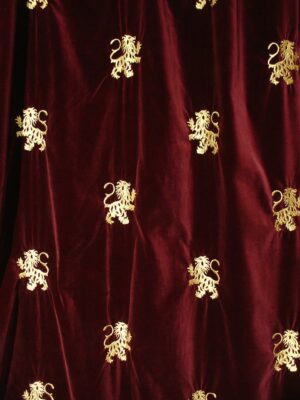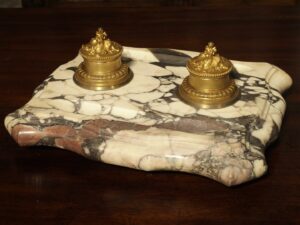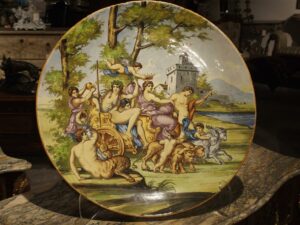Originally from 18th-century Italy, this pair of winged cherubs were hand-carved from wood as reflections of each other, meaning that their bodies are orientated as mirror images. Both figures have been shown with their arms held high, positioned as if they were holding an object away from their body. Their heads are turned to the side, as their innocent-looking visage gazes over the back shoulder. In between a pair of highly detailed wings extending from each cherub’s back, is a billowing sash that wraps around the waist, terminating on a front thigh. Both stand on an irregular circular base, although one has a rising section that lifts one of the sculpture’s feet. The cherubs still retain their original light brown hue, but a parcel paint finish has been added more recently, incorporating white, cream, and yellow hues to the sculptures.
In art dating to the time of ancient civilizations, such as Greece and Rome, deities that were thought to influence the life of mortals were depicted as winged babies known as putti. These iterations were often symbolic, showing the putti as mischievous or malevolent. During the Middle Ages, the use of putti fell out of favor, and they were largely not seen until the Renaissance when the famed sculptor, Donatello, began to visualize these figures as playful cherubs, as represented by our Italian sculptures from the 1700s.
CONDITION: Good antique condition with losses and age separations commensurate with 300-year-old wood. Slight trace of old woodworm. More recent restoration work, including metal brackets to strengthen the back of some of the wings and the parcel painted finish. Some variations to the dimensions, as each cherub was hand-carved. Possible missing element that each cherub held.


